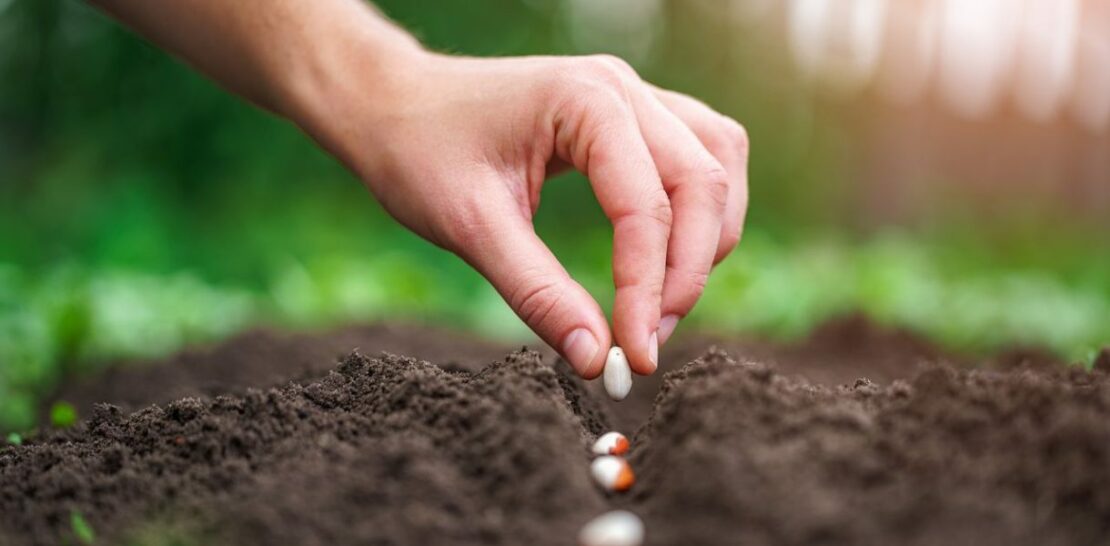Beans, one of the most versatile and nutritious crops, are a staple in gardens all around the world.
With so many varieties available, it’s no wonder that gardeners everywhere are eager to learn the secrets of successful bean sowing.
In this comprehensive guide, we will explore everything you need to know to ensure a thriving bean garden – from choosing the right variety and preparing the soil, to planting, nurturing, and harvesting your beans.
So, let’s dive in and unlock the secrets of successful bean sowing!
Choosing the Perfect Bean Variety for Your Garden
When it comes to beans, there’s no shortage of options to choose from. That’s why the first step on your bean-sowing journey is to carefully select the variety that best suits your needs and preferences.
- Pole beans are known for their vigorous growth, producing beans in clusters along a vine. These beans require a support system, such as a trellis or pole, but reward gardeners with a longer harvest period and a higher yield in a smaller space.
- Bush beans, on the other hand, are shorter plants that do not require support. They tend to produce beans all at once, making them perfect for gardeners who want a large harvest in a short amount of time. However, they do require more space to grow as they spread outwards rather than upwards.
- Dry beans are grown explicitly for their dried seeds, which can be stored for long periods and used as a protein source in various dishes. Popular varieties include kidney, black, and navy beans.
- Green beans, also known as snap beans or string beans, are harvested when the pods are still tender and can be eaten raw or cooked. These beans come in both bush and pole varieties, with popular cultivars such as Blue Lake, Kentucky Wonder, and Provider.
Consider your garden’s space, your desired harvest window, and your culinary preferences when selecting the perfect bean variety for your needs.
Preparing the Soil for Bean Sowing Success
The foundation of a thriving bean garden lies in the quality of the soil. Beans require well-drained, nutrient-rich soil to produce a bountiful harvest. Here’s what you need to do:
- Test your soil’s pH: Beans thrive in slightly acidic to neutral soil, with a pH range of 6.0 to 7.0. You can purchase a soil test kit from a local garden center or online to determine your soil’s pH level. If your soil is too acidic or alkaline, you can amend it with lime or sulfur, respectively.
- Check for adequate drainage: Beans are susceptible to root rot if they sit in waterlogged soil. To test your soil’s drainage, dig a hole approximately one foot deep and fill it with water. If the water drains within an hour, your soil has adequate drainage. If not, consider amending your soil with organic matter, such as compost, or planting your beans in raised beds.
- Add nutrients to your soil: Beans are legumes, which means they have a unique ability to fix nitrogen in the soil, making them a great crop for improving soil fertility. However, they still require additional nutrients for optimal growth. Prior to planting, incorporate a balanced, slow-release organic fertilizer or well-rotted compost into your soil.
- Prepare the planting area: Remove any weeds or debris from your planting area and loosen the soil to a depth of at least 10 inches to ensure proper root development. If you’re planting pole beans, install your trellis or support system before sowing your seeds.
Planting and Nurturing Your Beans for a Bountiful Harvest
The next step in successful bean sowing is planting and nurturing your seeds. Follow these guidelines to ensure optimal growth and a bountiful harvest:
- Timing:
- Beans are sensitive to cold temperatures and frost, so it’s essential to wait until the soil has warmed to at least 60°F (15°C) before planting your seeds. In general, this means waiting until two to three weeks after the last expected frost date in your area.
- Spacing:
- Proper spacing is crucialfor healthy bean growth and to prevent the spread of diseases. Bush beans should be planted about 2-4 inches apart in rows that are 18-24 inches apart. Pole beans, on the other hand, should be planted 4-6 inches apart in rows that are 30-36 inches apart. Dry beans typically require a spacing of 3-4 inches in rows that are 24-30 inches apart, while green beans can be spaced 3-4 inches apart in rows 18-24 inches apart.
- Sowing depth:
- Bean seeds should be sown at a depth of approximately 1-2 inches, ensuring that they are adequately covered with soil. Planting seeds too shallow may result in poor germination, while planting them too deep may cause the seedlings to struggle to reach the surface.
- Watering:
- Consistent and proper watering is critical for bean growth. Beans require approximately 1 inch of water per week, either from rainfall or supplemental irrigation. Water your beans deeply and infrequently, allowing the soil to dry out slightly between waterings. This encourages deep root growth and helps prevent diseases caused by excessive moisture.
- Mulching:
- Applying a layer of organic mulch around your bean plants can help retain moisture, suppress weeds, and regulate soil temperature. Opt for materials such as straw, grass clippings, or shredded leaves, and apply a 2-3 inch layer around the base of your plants, taking care not to let the mulch touch the stems.
- Pest control:
- Beans can fall victim to various pests, such as aphids, bean beetles, and slugs. Regularly inspect your plants for signs of damage and take prompt action if you spot any pests. Implementing organic pest control methods, such as introducing beneficial insects like ladybugs and lacewings, using diatomaceous earth, or applying neem oil, can help protect your beans without resorting to harmful chemicals.
Harvesting and Storing Your Beans for Maximum Enjoyment
Knowing when and how to harvest your beans is vital for maximizing their flavor and nutritional value. Follow these tips for a successful harvest and proper storage:
Green beans: Harvest green beans when the pods are firm, crisp, and have reached their full length, but before the seeds inside have fully developed. This typically occurs 50-70 days after planting, depending on the variety. Regularly harvesting your green beans encourages the plants to continue producing more pods. To harvest, gently hold the bean pod and snap or cut it from the plant, being careful not to damage the plant in the process.
Dry beans: Dry beans are ready for harvest when the pods have turned brown and dried out, usually around 70-100 days after planting. To harvest, pull up the entire plant and hang it upside-down in a well-ventilated area to finish drying. Once fully dry, remove the beans from the pods by hand or by threshing. Store the dried beans in airtight containers in a cool, dark, and dry location.
Proper storage: Freshly harvested green beans can be stored in the refrigerator for up to a week. For longer storage, consider blanching and freezing your beans, or canning them using a pressure canner. Dried beans, when stored properly, can last for several years.
In conclusion, a successful bean garden requires careful planning, attention to detail, and a commitment to nurturing your plants throughout their growth. By selecting the right bean variety, preparing the soil, planting and nurturing your seeds, and harvesting and storing your beans properly, you can unlock the secrets of successful bean sowing and enjoy a thriving, bountiful bean garden. So, grab your gardening tools and get started on your bean-sowing journey today!




